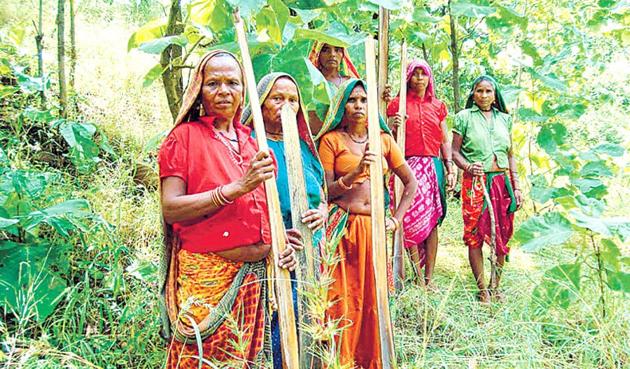How a social justice tool became a means to grab land in India’s forests
Since Independence, waves of forest encroachments have been regularised on one pretext or another, and this unfortunate trend seems to be continuing. With a recent United Nations report warning that one million species of plants and animals are poised on the brink of extinction, we need to take all forest destruction very seriously
The Forest Rights Act (FRA) was originally meant to redress historical injustice to genuine forest dwellers by conferring rights to traditionally occupied forest land. Following a multi-tier verification process, individual and community rights to approximately 72,000 sq km of forest land have been granted to claimants since 2008. However, the process has also unearthed about 19 lakh ineligible or bogus claims, clearly showing that the Act has been used as a Trojan horse by opportunistic land grabbers. Thanks to high-resolution satellite imagery, such encroachments can now be easily exposed.

On February 13, in response to a Public Interest Litigation by three wildlife conservation organisations, the Supreme Court directed state governments to recover all forest land occupied illegally since the FRA was enacted. Subsequently, the court directed that evictions be put “on hold” till details on procedure of rejections are examined.
While the forest rights bill originally envisaged only the protection of Scheduled Tribes, the goal posts were subsequently shifted to include a huge number of undefined claimants characterised as Other Traditional Forest Dwellers. Secondly, the cutoff date for eligibility was arbitrarily shifted from October 25, 1980, to December 13, 2005, opening the door to lakhs of new claimants. Thirdly, the bill’s original intent to only provide provisional rights to people living within national parks and sanctuaries, with a five-year time frame to resettle them outside with due compensation, never made it into the Act.
National parks and sanctuaries are the only safe refuges for a host of critically endangered species that cannot survive in the face of relentless hunting by local people, commercial exploitation of forest products, and livestock grazing. In a concession to this ecological reality, the FRA provides for the declaration of Critical Wildlife Habitats: safe havens where animals can live free of conflict with humans. Sadly, however, not one sq km has been declared as a Critical Wildlife Habitat.
While there can be no argument that economic development has played a major role in deforestation, government data reveals that whereas forest land diverted for development from 1980 to 2016 totals 6.33 lakh hectares, forest land granted as individual rights under the FRA between 2008 and 2018 adds up to about 19 lakh hectares. For a tigress and her cubs or a herd of elephants, it’s a moot point whether their forest was usurped by development projects or for cultivation, since the result is the same: the loss of habitat.
This inconvenient truth is countered with an oft-repeated fallacy that forest dwellers live in harmonious coexistence with wildlife and are actually beneficial to biodiversity. This is easily disprovable at least in the Indian context, where populations inside forests often exceed 10 people per sq km, rendering market-driven exploitation of Non Timber Forest Produce (NTFP) anything but harmonious or beneficial. Also, hunting by local communities is so pervasive in many parts of India that it has led to what scientists describe as the empty forest syndrome.
In a scientific paper on NTFP extraction by the Soliga tribe in the BRT Tiger Reserve in Karnataka, Aditi Sinha and Kamaljit S Bawa write: “Increasing demands for non-timber forest products and their commercial extractions can result in harvesting methods that maximise short term economic gains with little attention to long term ecological consequences”. They conclude: “Current fruit harvesting strategies and techniques used by the Soligas focus on maximising the economic returns by adopting methods of extraction such as lopping of branches and cutting of trees. Such practices can ultimately decrease the rates at which the populations grow, thereby making the extraction of Phyllanthus fruits unsustainable”. The authors cite many references from around the world that show that exploitation of NTFPs to meet growing market demand is resulting in the depletion of forest resources and the degradation of natural ecosystems.
Since Independence, waves of forest encroachments have been regularised on one pretext or another, and this unfortunate trend seems to be continuing. With a recent United Nations report warning that one million species of plants and animals are poised on the brink of extinction, we need to take all forest destruction very seriously. The widespread abuses of the FRA that have come to light must be viewed as a wake up call, and any attempt to parcel away our last forests to lakhs of ineligible and bogus claimants must be stopped.
Shekar Dattatri is former member, National Board for Wildlife
The views expressed are personal






